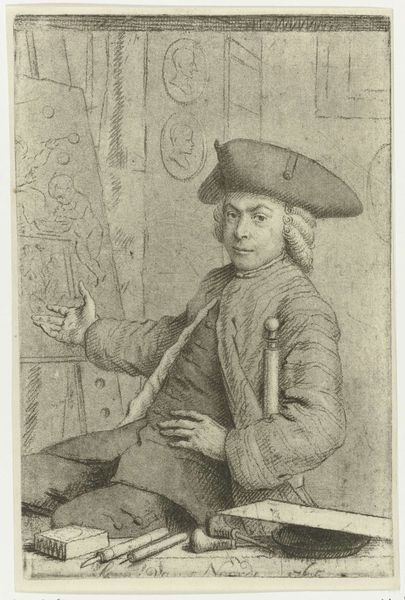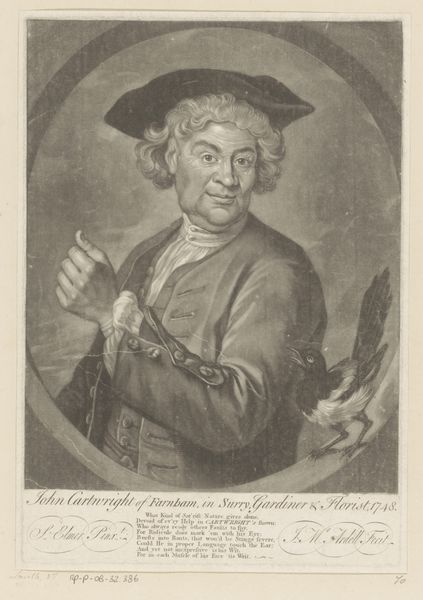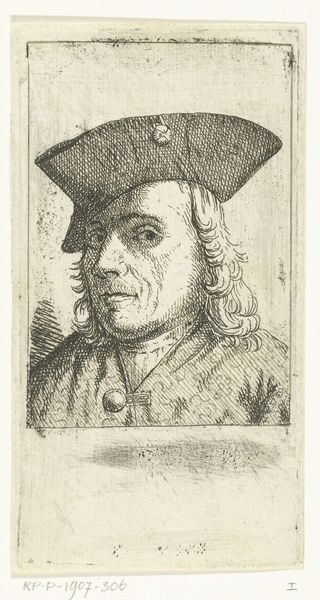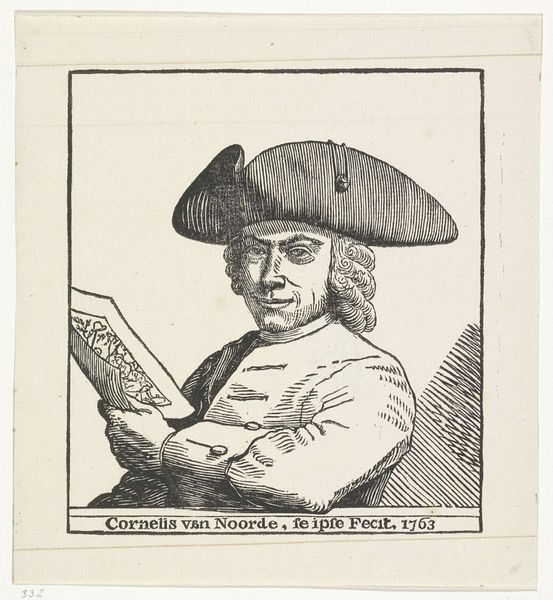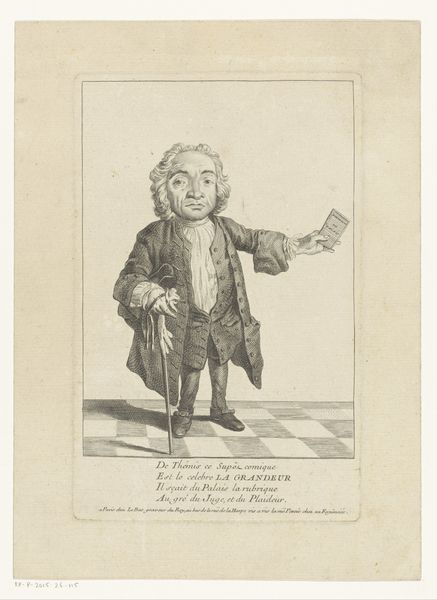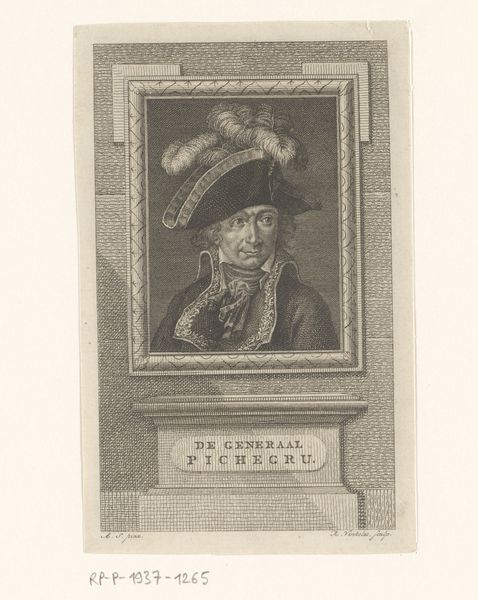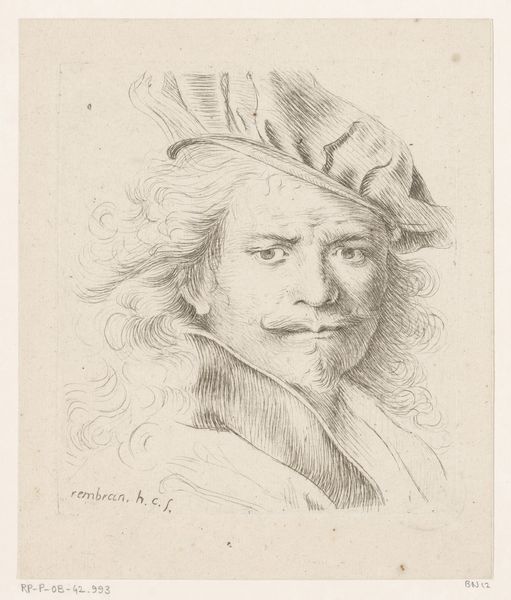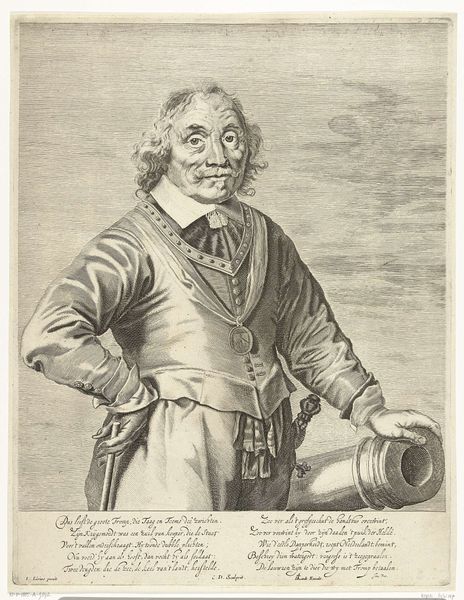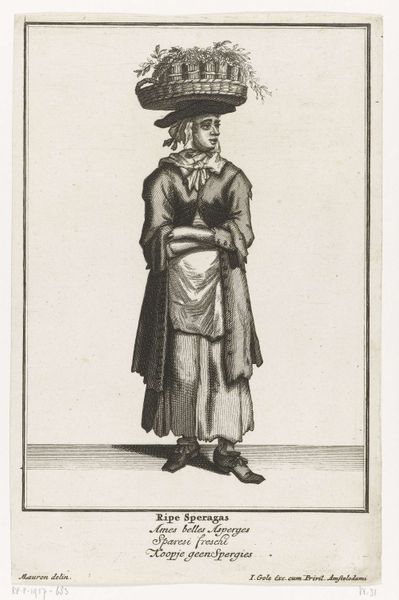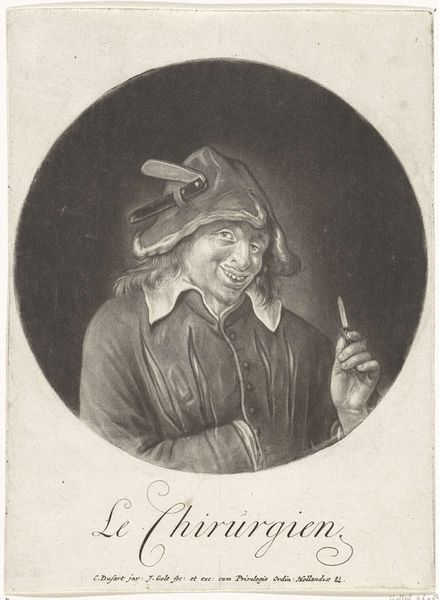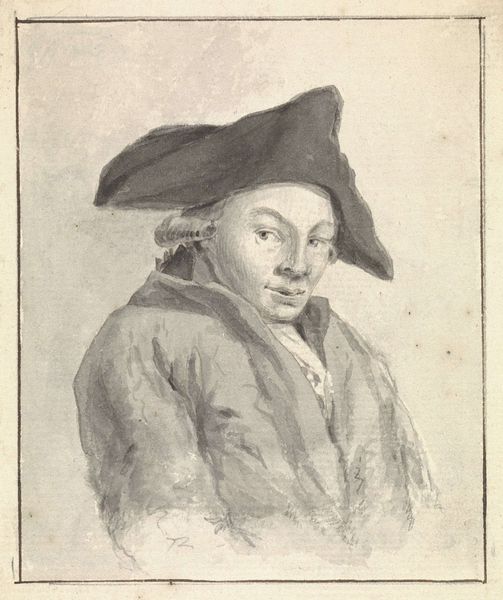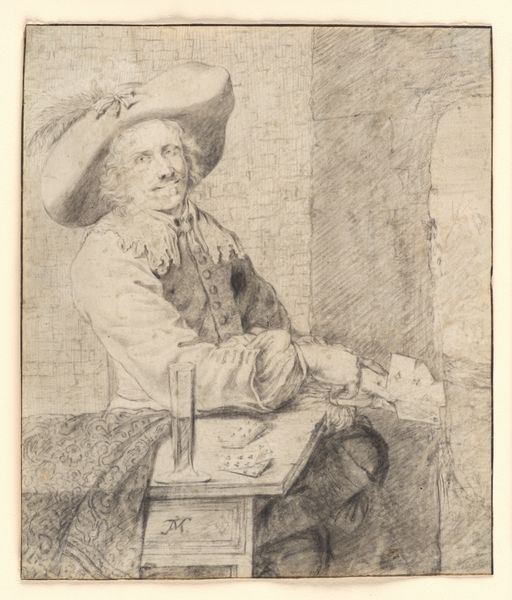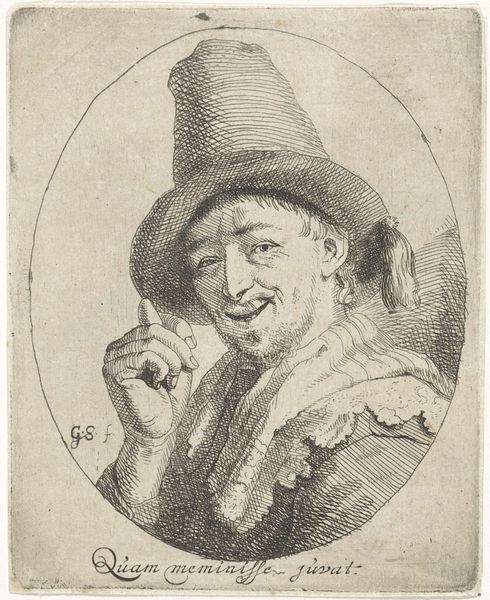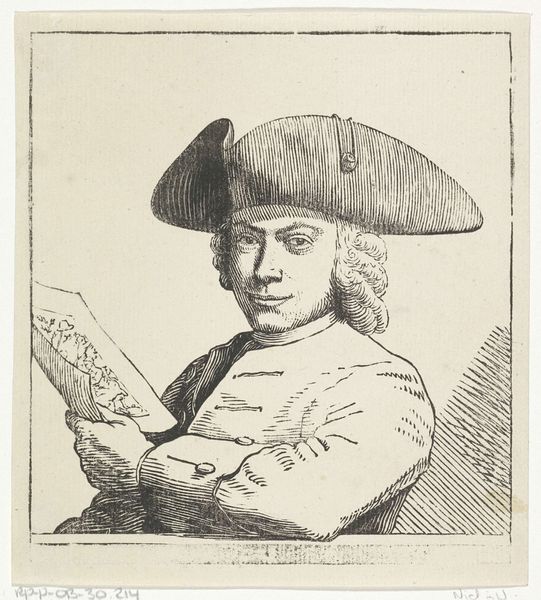
Dimensions: height 140 mm, width 115 mm
Copyright: Rijks Museum: Open Domain
Curator: Up next, we have "Self-Portrait with Pen and Drawing," created in 1764 by Cornelis van den Berg. It's a Dutch Golden Age engraving, rendered in pen and ink on paper. Editor: My initial impression is one of incredible intricacy; the artist's plaid jacket is almost overwhelming in its detailed rendering. The composition feels very much of its time. Curator: Absolutely. Consider that van den Berg depicts himself in the act of creation. The image offers a direct line into the self-awareness of the artist, at a time of shifting social identities for creatives. We see an artisan portraying their own image and shaping public perception. Editor: And formally, that hand holding the pen is pivotal. Its placement divides the image plane in such a clever way! Notice how van den Berg’s gaze directs us back to his working hand and the drawing in it? Curator: Precisely. This gaze confronts the viewer, but within the framework of a culture grappling with definitions of artistry and craftsmanship. Does the detailed plaid point to the rising merchant class, eager for representation? Is the almost quizzical expression intended to place the artist above them or aligned with them? Editor: That question of intention, of agency is important. I do think, if we consider the way light catches the artist's brow versus how deeply etched that crosshatching on the sleeve is, the visual texture creates an undeniably striking effect. Curator: The clothing definitely conveys social status. It seems he understands his position within the complex social strata of 18th-century Netherlands, doesn’t it? I mean, art increasingly served to construct and communicate identity. Editor: A well-chosen detail, indeed. This makes one realize how meticulously this relatively small engraving draws our eye into broader aesthetic questions, such as artistic value versus skilled handcraft. Curator: It encourages us to reconsider narratives of individualism that art history sometimes projects onto the artist figure. Editor: I agree, looking closely at its formal elements opened up broader questions and different interpretations of the artwork.
Comments
No comments
Be the first to comment and join the conversation on the ultimate creative platform.
